Pandas Filter By List Of Strings
Pandas is a powerful data manipulation library in Python. It provides several methods to filter data in a DataFrame based on certain conditions. One common use case is filtering a DataFrame based on a list of strings. This article will guide you through the process of filtering a Pandas DataFrame using a list of strings, including handling exact and partial matches, case sensitivity, and special characters.
Converting Pandas DataFrame to a List of Strings
Before we dive into filtering a DataFrame using a list of strings, let’s first understand how to convert a DataFrame into a list of strings. We can achieve this by using the `tolist()` method in Pandas.
“`python
import pandas as pd
# Creating a DataFrame
data = {‘Name’: [‘John’, ‘Doe’, ‘Alice’, ‘Bob’],
‘Age’: [25, 32, 28, 35]}
df = pd.DataFrame(data)
# Converting DataFrame to a list of strings
df_list = df[‘Name’].tolist()
“`
In the example above, we create a DataFrame with two columns: “Name” and “Age”. We then convert only the “Name” column to a list of strings using the `tolist()` method. Now that we have our list, let’s explore how to filter a DataFrame using it.
Filtering a Pandas DataFrame using the List of Strings
To filter a Pandas DataFrame based on a list of strings, we can use the `isin()` method. This method checks whether each element in a DataFrame column is contained in the given list. Let’s see how it works:
“`python
# Filtering DataFrame using the list of strings
filtered_df = df[df[‘Name’].isin([‘John’, ‘Alice’])]
“`
In the above example, we filter the DataFrame based on the “Name” column using the `isin()` method with the list [‘John’, ‘Alice’]. The resulting `filtered_df` will only contain rows where the “Name” column is either ‘John’ or ‘Alice’.
Filtering based on Exact String Matches
By default, when using the `isin()` method, exact string matches are considered. This means that the filter will only match the strings in the list exactly as they appear in the DataFrame. For example, if our list contains ‘John’, it will not match a row with ‘john’ or ‘John Smith’.
Filtering based on Partial String Matches
Sometimes, we may want to filter based on partial string matches. To accomplish this, we can use the `str.contains()` method in combination with regular expressions. This method checks whether a pattern exists within each element of a DataFrame column.
“`python
# Filtering DataFrame based on partial string matches
filtered_df = df[df[‘Name’].str.contains(‘Jo’, case=False, regex=True)]
“`
In the above example, we filter the DataFrame based on the “Name” column using `str.contains()` with the pattern ‘Jo’. By setting the `case` parameter to False, we ignore case sensitivity. By setting the `regex` parameter to True, we enable the use of regular expressions for pattern matching.
Handling Case Sensitivity in String Filtering
When filtering Pandas DataFrames based on string values, case sensitivity can pose challenges. By default, string filtering in Pandas is case sensitive. However, we can overcome this by using the `str.contains()` method and setting the `case` parameter to False.
“`python
# Filtering DataFrame with case sensitivity
filtered_df = df[df[‘Name’].str.contains(‘john’)] # Returns an empty DataFrame
# Filtering DataFrame without case sensitivity
filtered_df = df[df[‘Name’].str.contains(‘john’, case=False)] # Returns rows containing ‘John’
“`
In the above example, the first filter returns an empty DataFrame because ‘john’ is not an exact match for ‘John’. The second filter, with case sensitivity disabled, successfully matches ‘John’.
Example Applications and Further Considerations
Aside from the basic use cases covered above, filtering Pandas DataFrames by a list of strings can have broader applications. Here are some additional considerations to keep in mind:
1. Pandas filter column containing list: If a DataFrame column contains lists instead of strings, the `apply()` method can be used to convert the column to a string and perform the filtering.
2. Pandas filter column contains multiple strings: To filter a DataFrame based on multiple strings, pass a list of strings to the `isin()` method.
3. Pandas filter special characters: When filtering using special characters, like ‘$’, ‘#’, or ‘/ ‘, it is recommended to use the `str.contains()` method with regular expressions enabled.
4. Pandas filter list contains: To filter a DataFrame based on whether a column contains any string from a given list, use the `str.contains()` method in combination with the ‘|’ (pipe) operator.
5. Pandas filter by column starts with: To filter a DataFrame to include only rows where a column value starts with a specific string, use the `str.startswith()` method.
6. Pandas filter column equals string: To filter a DataFrame based on an exact string match in a specific column, use the equality operator (‘==’).
7. Pandas DataFrame filter by column value like: To filter a DataFrame based on a column value that matches a specific pattern, use the `str.contains()` method with regular expressions enabled.
8. Pandas filter regex multiple strings: To filter a DataFrame based on multiple regular expression patterns, use the `str.contains()` method with the ‘|’ (pipe) operator and the regex parameter enabled.
With these techniques, you can efficiently filter Pandas DataFrames using a list of strings, both for exact and partial string matches.
Python Pandas Tutorial (Part 4): Filtering – Using Conditionals To Filter Rows And Columns
Keywords searched by users: pandas filter by list of strings pandas filter column containing list, pandas filter column contains multiple strings, pandas filter special characters, pandas filter list contains, pandas filter by column starts with, pandas filter column equals string, pandas dataframe filter by column value like, pandas filter regex multiple strings
Categories: Top 72 Pandas Filter By List Of Strings
See more here: nhanvietluanvan.com
Pandas Filter Column Containing List
Pandas, the popular Python library used for data manipulation and analysis, provides a powerful method to filter data based on specific criteria. One common scenario is filtering a column that contains a list of values. In this article, we will explore this topic in-depth and provide you with a comprehensive guide on how to effectively filter pandas columns containing lists.
Filtering a column using lists can be extremely useful when you want to extract specific data points that meet certain conditions. Whether you are working with large datasets or small ones, understanding how to filter columns containing lists will greatly enhance your data analysis capabilities.
Let’s dive right in and explore the various techniques and methods you can use to filter pandas columns with lists.
The Basics of Filtering Columns with Lists
To begin with, let’s assume you have a pandas DataFrame with a column that contains lists of values, such as a column named “categories” that holds various categories for each row. Here’s an example DataFrame to illustrate the concept:
“`
import pandas as pd
data = {
‘id’: [1, 2, 3, 4, 5],
‘categories’: [[‘A’, ‘B’], [‘A’], [‘C’], [‘B’], [‘A’, ‘C’]]
}
df = pd.DataFrame(data)
“`
Now, let’s say you want to filter the DataFrame to retrieve only the rows where the category ‘A’ is present in the “categories” column. You can accomplish this by using pandas’ boolean indexing technique as follows:
“`
filtered_df = df[df[‘categories’].apply(lambda x: ‘A’ in x)]
“`
By doing so, you are utilizing the `apply()` method to check if the category ‘A’ exists in each row’s “categories” list. The resulting filtered DataFrame will only contain rows where this condition is satisfied.
Advanced Filtering Techniques
While the basic filtering method mentioned above is useful for simple scenarios, pandas offers more advanced techniques to filter columns containing lists.
One such technique is to filter rows based on whether they contain any intersection with a specified list of values. For example, if you want to filter the DataFrame to include rows that have at least one category in common with [‘A’, ‘B’], you can use the following code:
“`
filtered_df = df[df[‘categories’].apply(lambda x: bool(set(x) & set([‘A’, ‘B’])))]
“`
This code utilizes the `set()` function to convert both the row’s categories list and the specified list into sets. Then, it checks if there is any intersection between the two sets, which is determined by the `&` operator. If an intersection is found, the row is included in the filtered DataFrame.
Additionally, you may need to filter rows based on whether they contain all the elements from a specified list. To achieve this, you can use the following code:
“`
filtered_df = df[df[‘categories’].apply(lambda x: set([‘A’, ‘B’]).issubset(x))]
“`
This code uses the `set()` and `issubset()` functions to check if the specified list of categories is a subset of the row’s categories list. If it is, the row is included in the filtered DataFrame.
FAQs:
Q1: Can I filter columns containing lists based on multiple conditions simultaneously?
A1: Yes, you can. By combining multiple boolean expressions using logical operators like `&` for “AND” conditions and `|` for “OR” conditions, you can filter columns containing lists with complex criteria.
Q2: What if I want to filter rows based on the length of the list in the column?
A2: You can filter rows based on the length of the list in the column by using the `len()` function within your filtering expression. For example, to filter rows where the “categories” column has a length greater than 2, you can use `filtered_df = df[df[‘categories’].apply(lambda x: len(x) > 2)]`.
Q3: Are these filtering techniques limited to columns with lists?
A3: No, these techniques can be used to filter any pandas column that contains iterable objects, such as lists, sets, or tuples.
Q4: Can I combine these filtering techniques with other pandas operations?
A4: Absolutely! You can combine these filtering techniques with any other pandas operations, such as selecting specific columns or performing aggregations, to further refine your data analysis tasks.
In conclusion, pandas provides powerful tools to filter columns containing lists. By using boolean indexing and advanced techniques, you can extract specific data points that meet your desired criteria. Whether you are handling small or large datasets, mastering these techniques will undoubtedly boost your data analysis capabilities. Stay curious, keep exploring, and unlock the true potential of pandas!
Pandas Filter Column Contains Multiple Strings
To begin, let’s first understand the basics of filtering in pandas. Filtering allows you to select a subset of the data based on specific conditions. Pandas provides a variety of methods to filter data, but for string filtering, we will primarily use the `contains()` method.
The `contains()` method is used to check if a string is present in a series or column of a pandas DataFrame. By default, it is case-sensitive, but we can make it case-insensitive by setting the `case` parameter to `False`.
Now, let’s move on to filtering a column that contains multiple strings. For this, we can pass a regular expression as a pattern to the `contains()` method. Regular expressions allow us to define complex patterns and search for matches within strings.
To filter a column that contains multiple strings, we can use the `|` operator in our regular expression. The `|` operator acts as a logical OR, allowing us to search for multiple strings simultaneously. For example, if we want to filter a column based on the presence of either “apple” or “banana”, we can use the regular expression pattern “apple|banana”.
Here is an example to demonstrate the filtering process:
“`python
import pandas as pd
# Create a sample DataFrame
data = {‘fruits’: [‘apple’, ‘banana’, ‘orange’, ‘mango’, ‘kiwi’]}
df = pd.DataFrame(data)
# Filter the ‘fruits’ column for rows containing ‘apple’ or ‘banana’
filtered_df = df[df[‘fruits’].str.contains(‘apple|banana’, case=False)]
print(filtered_df)
“`
Output:
“`
fruits
0 apple
1 banana
“`
In the above example, we filtered the ‘fruits’ column of the DataFrame `df` using the regular expression pattern ‘apple|banana’. The resulting DataFrame, `filtered_df`, only contains the rows where the ‘fruits’ column contains either ‘apple’ or ‘banana’.
Now let’s move on to the FAQs section to address some common questions and concerns related to filtering a pandas column that contains multiple strings.
**FAQs:**
1. **Can I filter based on multiple strings using pandas without using regular expressions?**
Yes, you can filter a pandas column based on multiple strings without using regular expressions. One way to do this is by using the `isin()` method. The `isin()` method allows you to check if a value is contained within a list or another Series. Here is an example:
“`python
filtered_df = df[df[‘fruits’].isin([‘apple’, ‘banana’])]
“`
2. **Is the filtering case-sensitive?**
By default, the `contains()` method is case-sensitive. However, you can make it case-insensitive by setting the `case` parameter to `False`. For example:
“`python
filtered_df = df[df[‘fruits’].str.contains(‘apple|banana’, case=False)]
“`
3. **Can I filter based on multiple conditions?**
Yes, you can filter a pandas column based on multiple conditions. You can combine multiple conditions using logical operators such as `&` (AND) and `|` (OR). Here is an example:
“`python
filtered_df = df[(df[‘fruits’].str.contains(‘apple’, case=False)) & (df[‘fruits’].str.contains(‘banana’, case=False))]
“`
4. **Can I filter based on string prefixes or suffixes?**
Yes, you can filter a pandas column based on string prefixes or suffixes. You can use the `startswith()` or `endswith()` methods to check if a string starts or ends with a particular pattern. Here is an example:
“`python
filtered_df = df[df[‘fruits’].str.startswith(‘app’)]
“`
This will filter the ‘fruits’ column for rows where the values start with ‘app’.
In conclusion, pandas provides convenient methods for filtering data based on specific conditions. When dealing with columns that contain multiple strings, regular expressions can help us define complex patterns and search for multiple strings simultaneously. By utilizing these techniques, you can efficiently filter pandas columns containing multiple strings as per your data analysis requirements.
Pandas Filter Special Characters
Introduction:
Special characters can be a challenging aspect of data manipulation, especially when using pandas in English. These characters might include punctuation marks, symbols, or even non-English characters. In this article, we will explore how pandas can help filter and handle special characters in English text data. We will cover various techniques and methods while providing detailed explanations and examples. Let’s dive in!
Section 1: Understanding Special Characters in English Data
Before delving into pandas’ functionalities for filtering special characters, it is essential to gain a solid understanding of what special characters are and how they affect data analysis. Special characters encompass a wide range of characters that deviate from the standard alphanumeric characters found in English text. They can include punctuation marks such as commas, periods, question marks, symbols like @, %, #, and even non-English characters like accents, umlauts, or diacritics.
Section 2: Identifying Special Characters in a Pandas DataFrame
To effectively handle special characters, we first need to identify their presence within a pandas DataFrame. Pandas provides several methods that can be used for detecting and filtering special characters in English text columns. One such method includes utilizing regular expressions (regex) to search for and isolate specific patterns of characters. By defining a regular expression pattern that includes special characters, we can filter out rows or columns that contain them.
Section 3: Filtering Special Characters with Pandas
Now that we understand how to identify special characters within a pandas DataFrame, let’s explore various techniques for filtering them. One commonly used method is the `.str.contains()` function, which allows us to check if a pattern is present within a string column and create a boolean mask. By applying this mask, we can filter out rows that contain special characters.
For example, suppose we have a DataFrame with a column ‘text’ that contains sentences. We can use the following code to filter out rows with special characters:
“`python
special_chars = ‘[@#$%^&*!~]’
df_filtered = df[~df[‘text’].str.contains(special_chars, regex=True)]
“`
The above code will create a new DataFrame, `df_filtered`, excluding all rows in the original DataFrame that contain special characters defined in the `special_chars` variable.
Section 4: Cleaning Special Characters with Pandas
In some cases, we may not want to completely remove rows containing special characters but instead clean or sanitize the data by removing those characters. Pandas provides several methods for cleaning special characters, such as using the `.str.replace()` function to substitute special characters with empty strings or desired alternatives.
For instance, let’s say we want to remove all non-alphanumeric characters from a ‘text’ column. We can achieve this using the following code:
“`python
df[‘text’] = df[‘text’].str.replace(‘[^a-zA-Z0-9\s]’, ”, regex=True)
“`
The code above will remove any character that is not alphabetic, numeric, or a whitespace character from the ‘text’ column.
Section 5: Frequently Asked Questions (FAQs)
Q1: Can pandas handle non-English special characters?
A1: Yes, pandas can handle non-English special characters. By utilizing appropriate encoding schemes and defining the correct character sets, pandas can filter and manipulate non-English special characters just as effectively as English special characters.
Q2: How can I remove only specific special characters from my data?
A2: To remove specific special characters, you can modify the regular expression pattern used within the `.str.replace()` function. Define a pattern that encompasses only the special characters you wish to remove.
Q3: Can pandas handle special characters in different data types, such as numeric or datetime?
A3: Yes, pandas can handle special characters in different data types, including numeric or datetime. However, it’s important to note that special characters in numeric or datetime data may need to be treated differently based on the desired outcome.
Q4: How can I handle special characters in column names rather than column values?
A4: To handle special characters in column names, you can utilize pandas’ `.rename()` function or apply string manipulation techniques to modify the column names.
Conclusion:
Handling and filtering special characters is an important aspect of working with English text data in pandas. This article has provided a comprehensive guide to effectively identify, filter, and clean special characters using pandas’ powerful functionalities. By mastering these techniques, data analysts and scientists will be better equipped to handle special characters within their English text data, ensuring more accurate and meaningful analyses.
Images related to the topic pandas filter by list of strings

Found 7 images related to pandas filter by list of strings theme

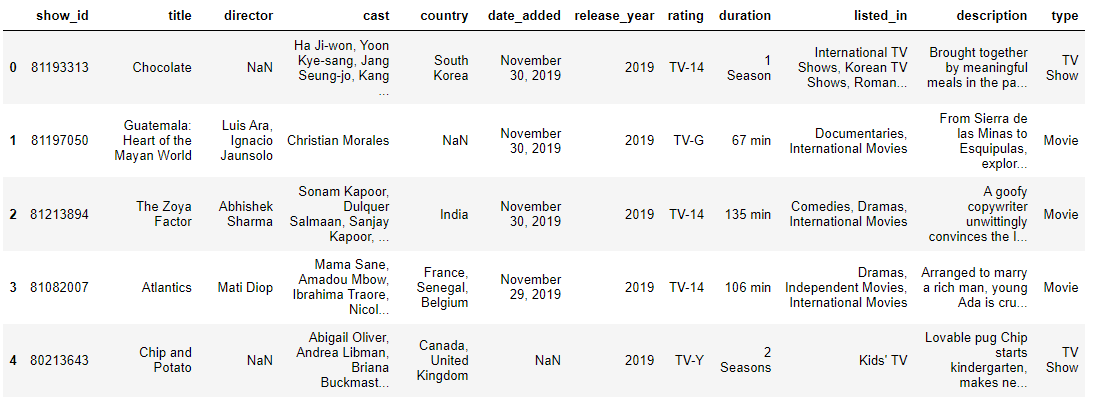

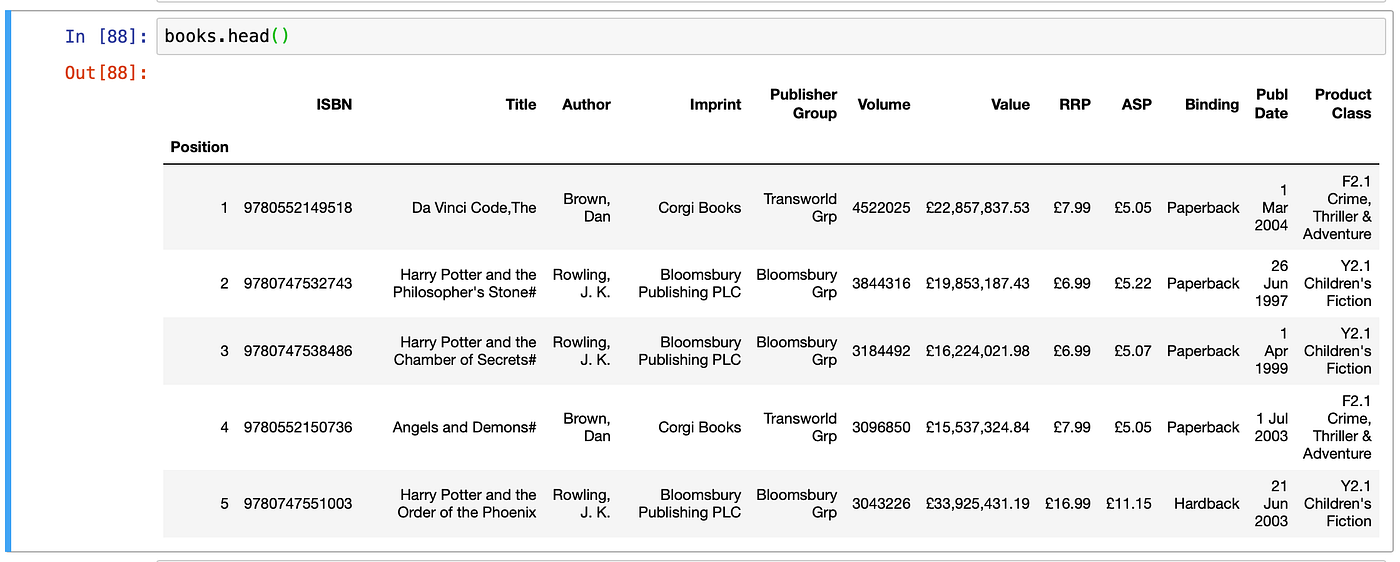

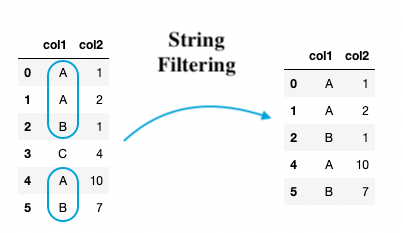


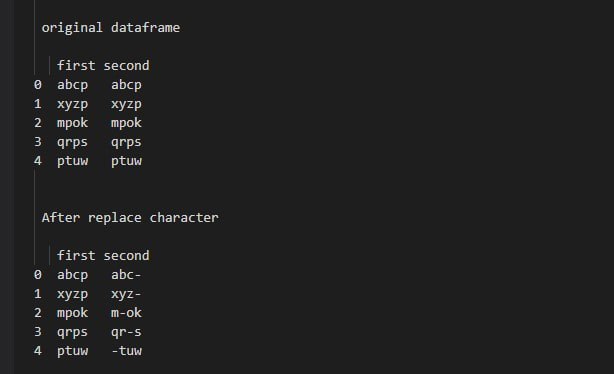
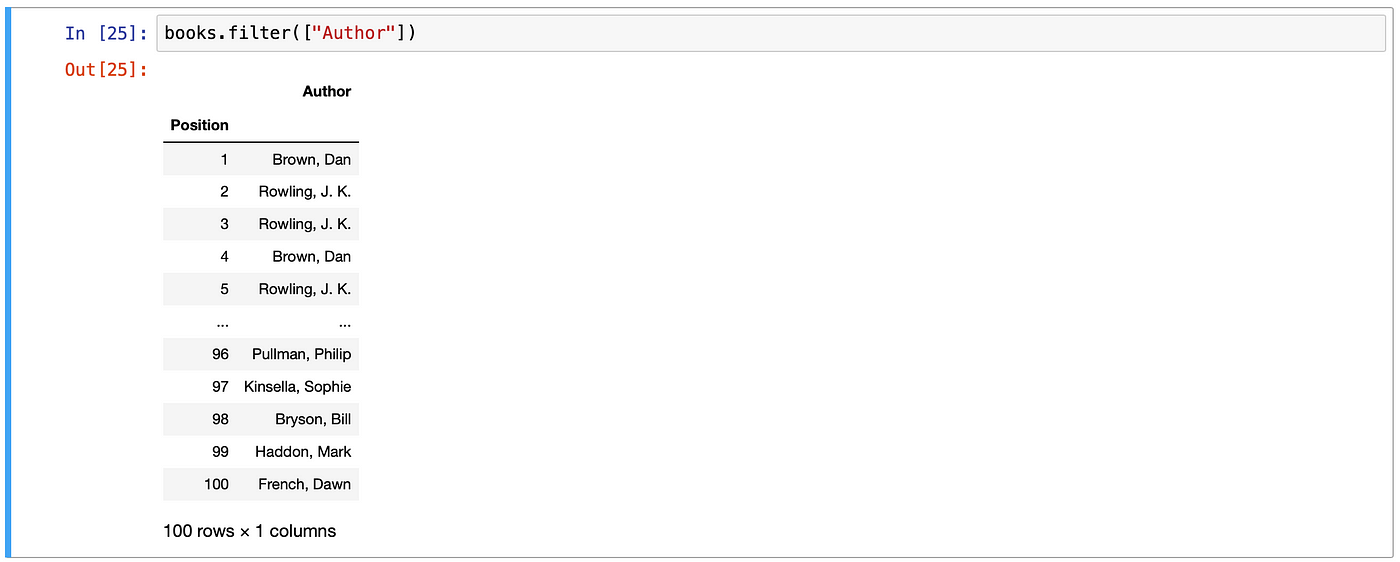
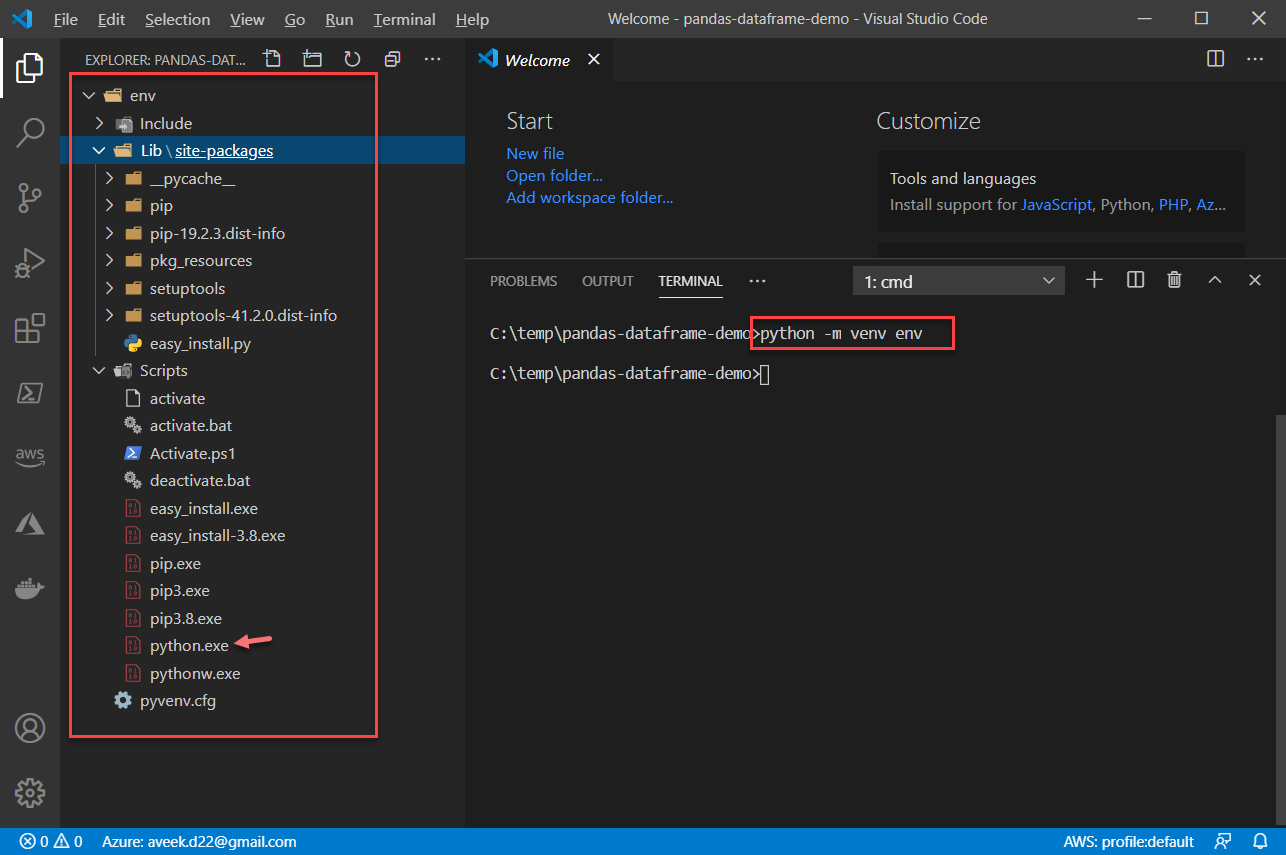
-Mar-10-2022-08-11-10-40-PM.png?width=650&name=Pandas%20Filter%20Rows%20(V4)-Mar-10-2022-08-11-10-40-PM.png)

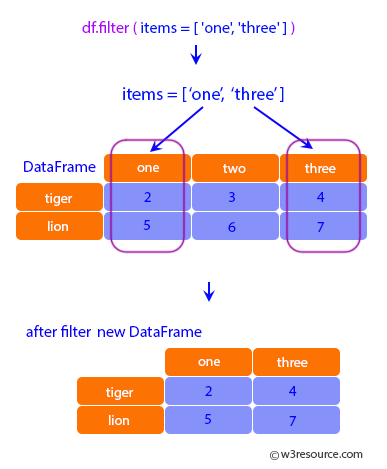
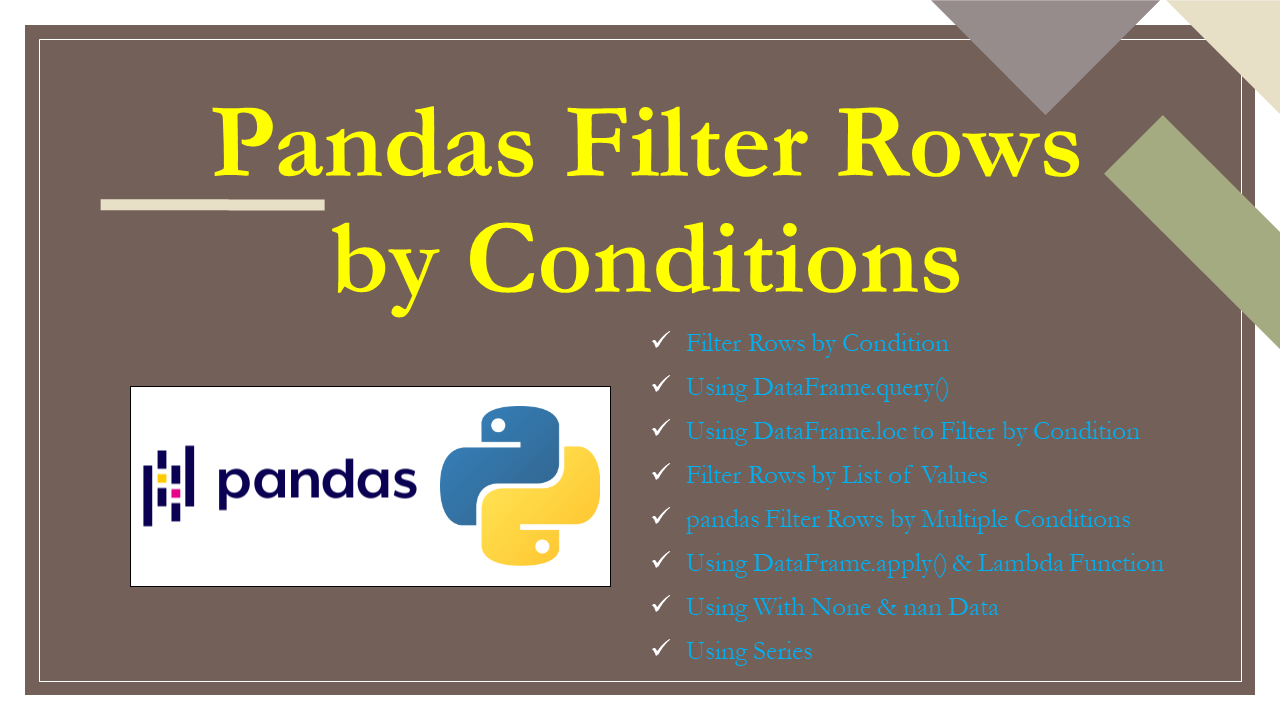
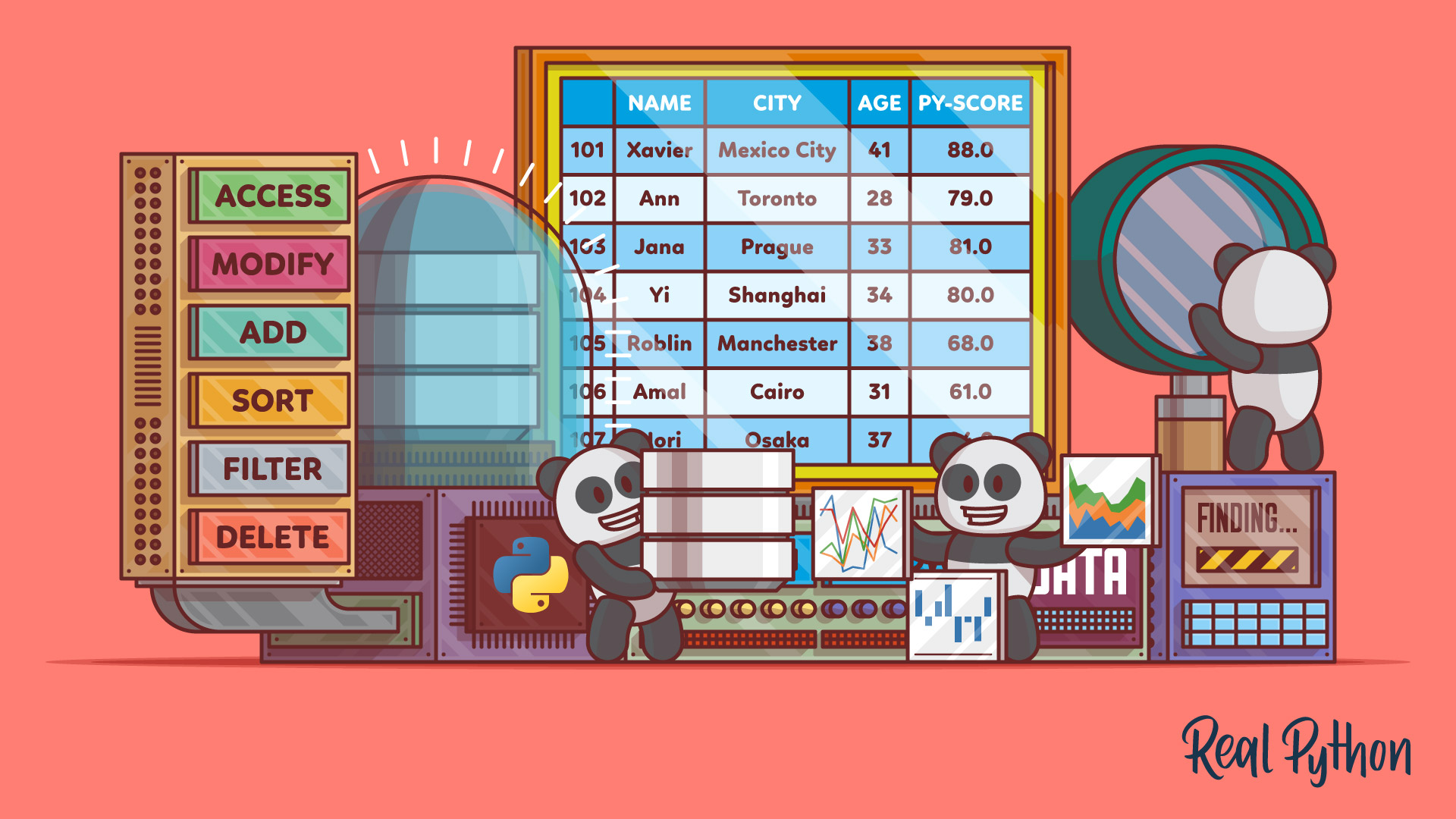
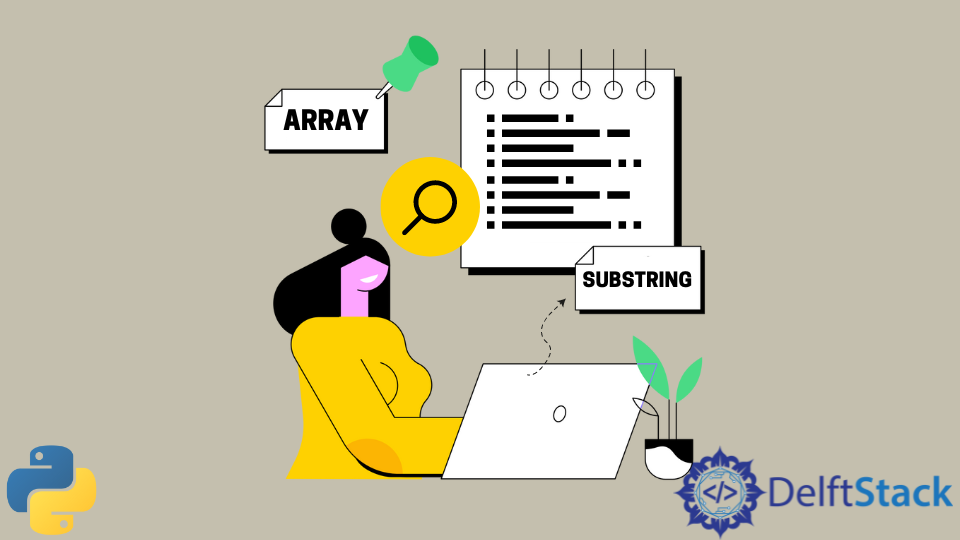




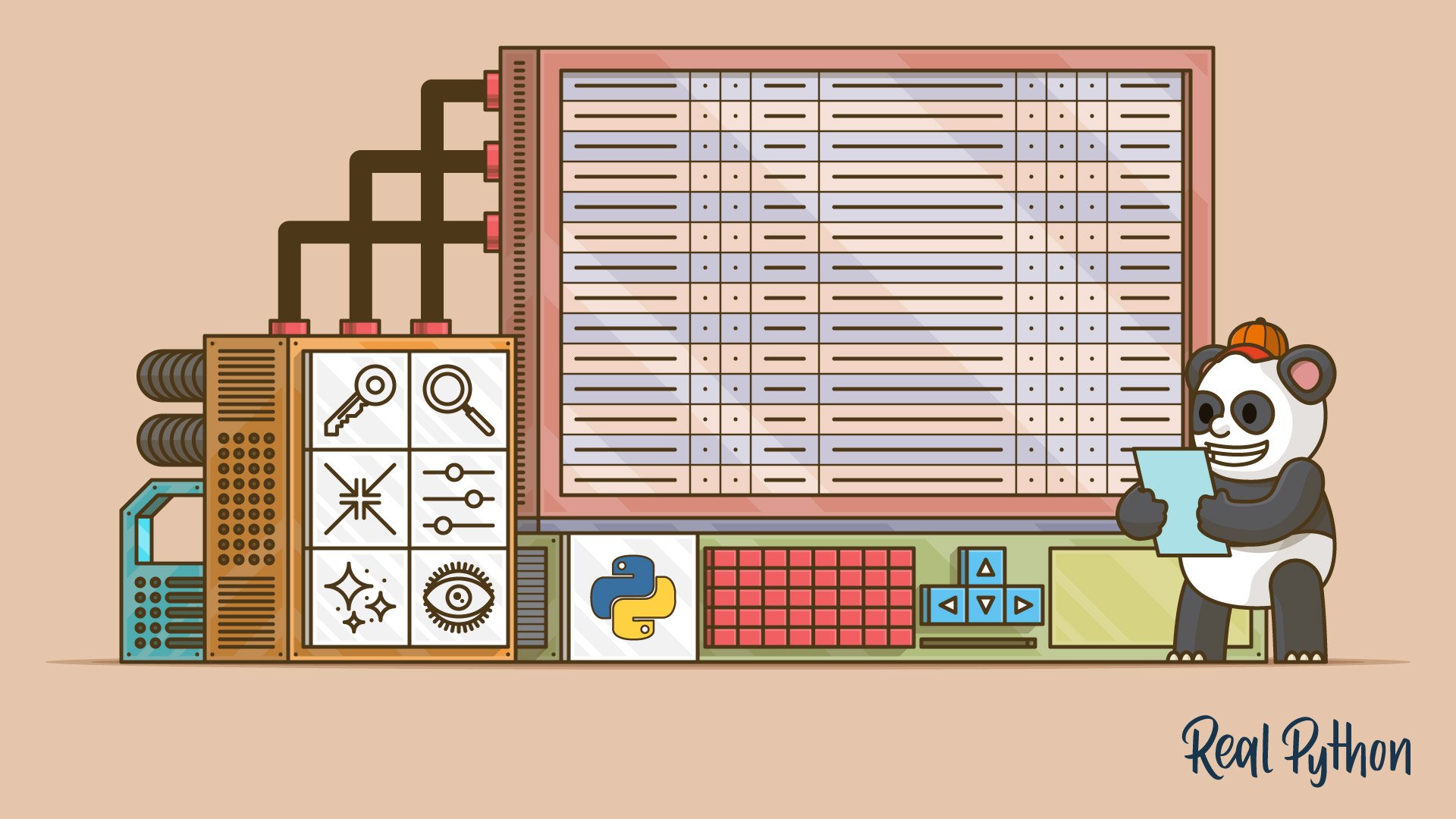
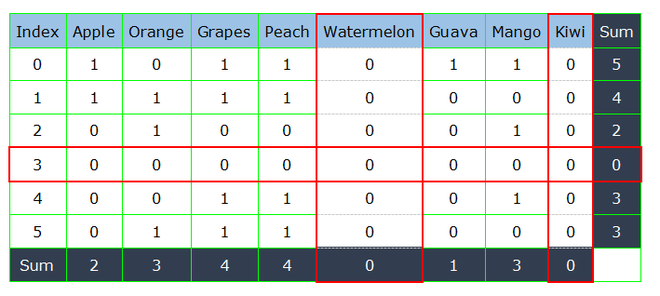
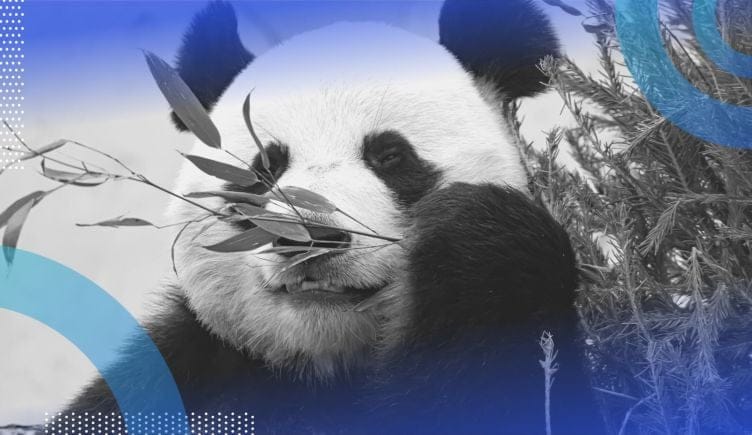


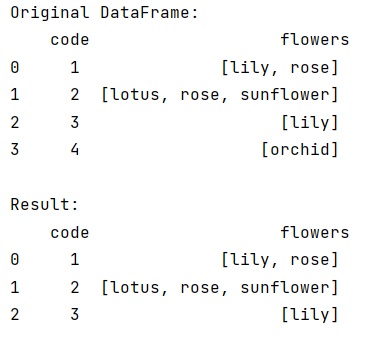


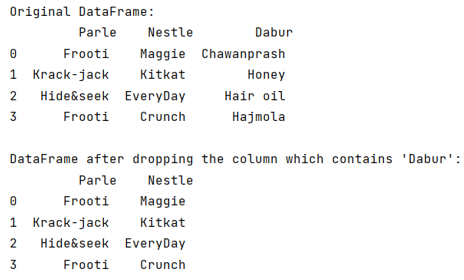


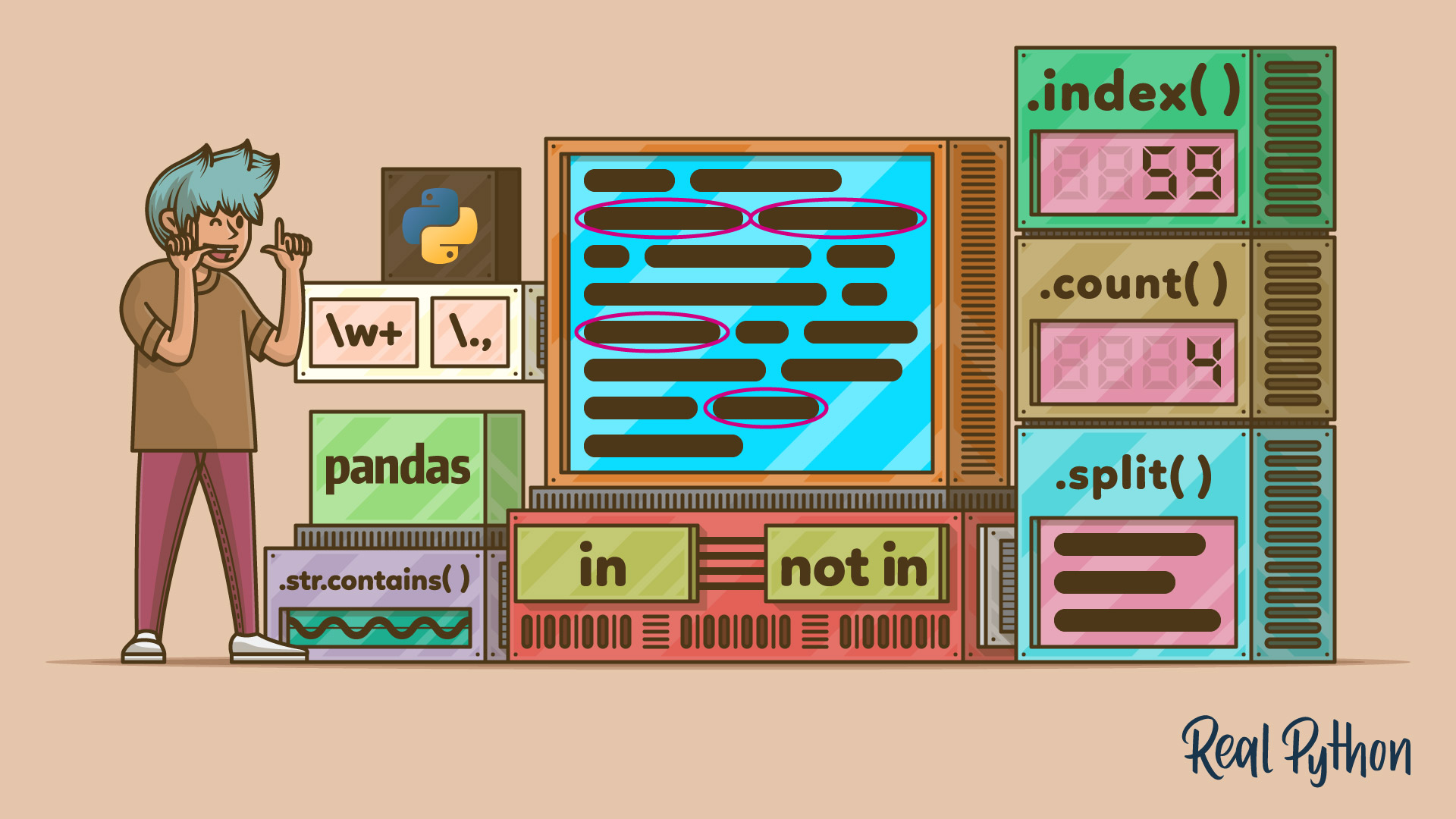
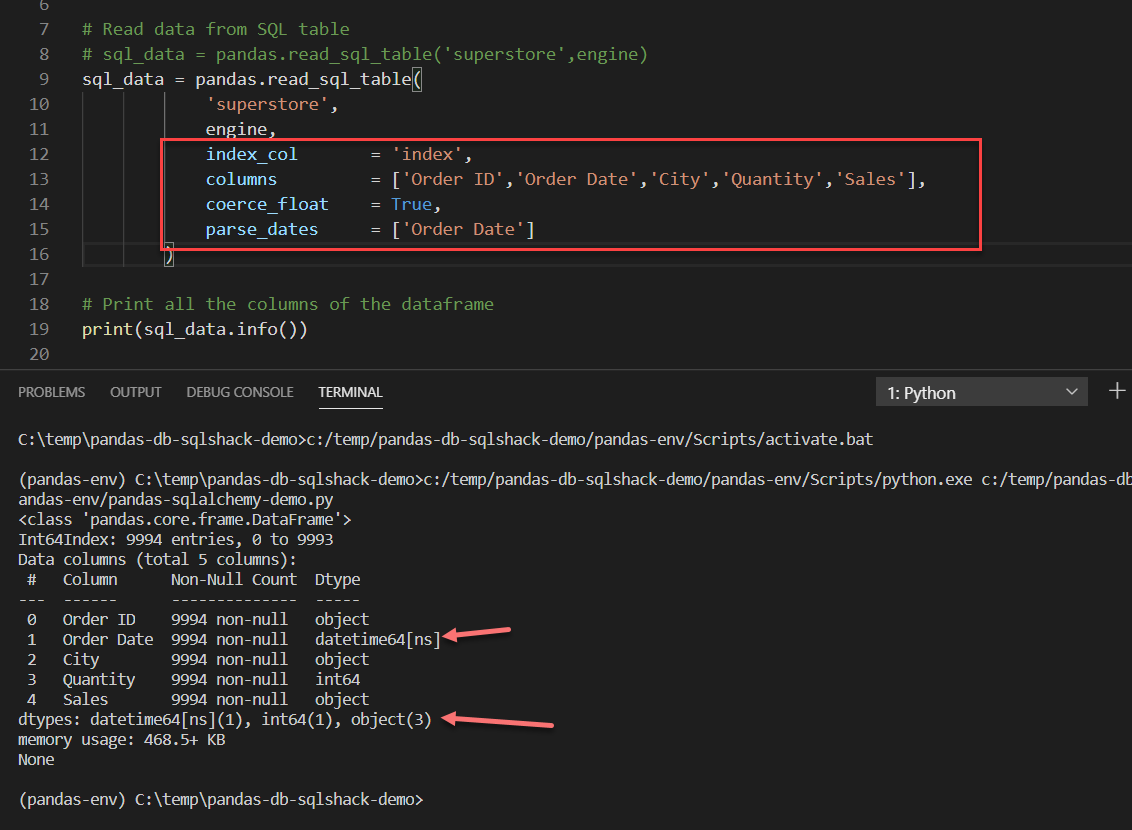




-Mar-10-2022-08-11-10-92-PM.png?width=382&height=169&name=Pandas%20Filter%20Rows%20(V4)-Mar-10-2022-08-11-10-92-PM.png)





Article link: pandas filter by list of strings.
Learn more about the topic pandas filter by list of strings.
- Filter out rows based on list of strings in Pandas – Stack Overflow
- Filter a Pandas DataFrame by a Partial String or Pattern in 8 …
- Pandas Filter DataFrame by Substring criteria
- Pandas: How to Filter Rows that Contain a Specific String
- Filter a List of Strings using a Wildcard in Python – bobbyhadz
- Filtering strings based on length in Pandas Series – SkyTowner
- String filters in pandas: you’re doing it wrong – Artefact
- Pandas dataframe select rows where a list-column contains …
See more: https://nhanvietluanvan.com/luat-hoc/